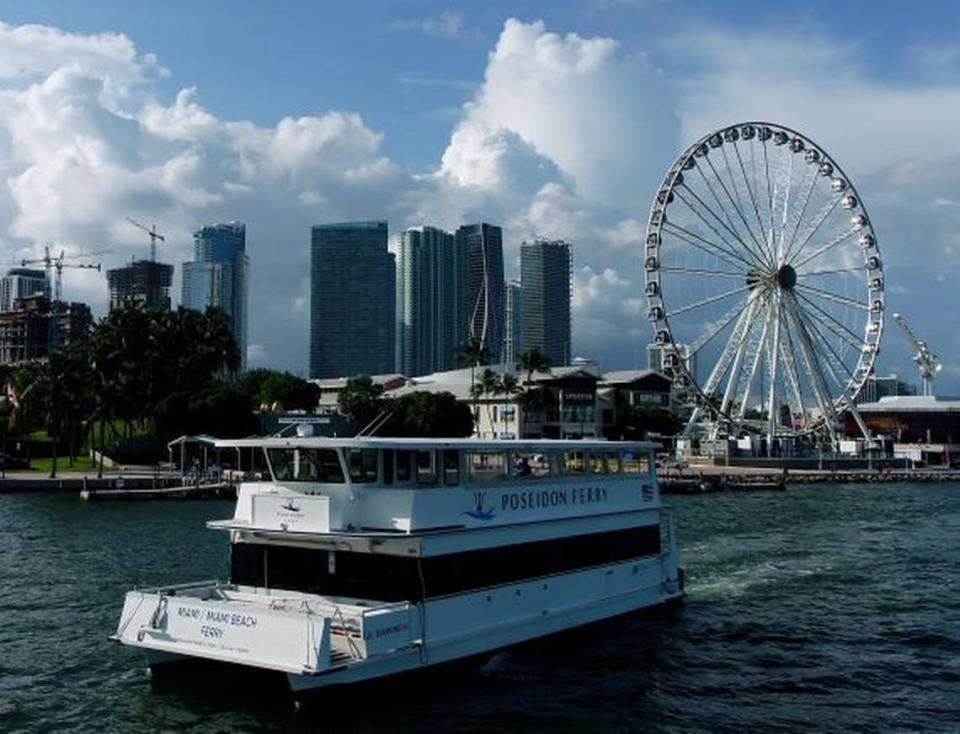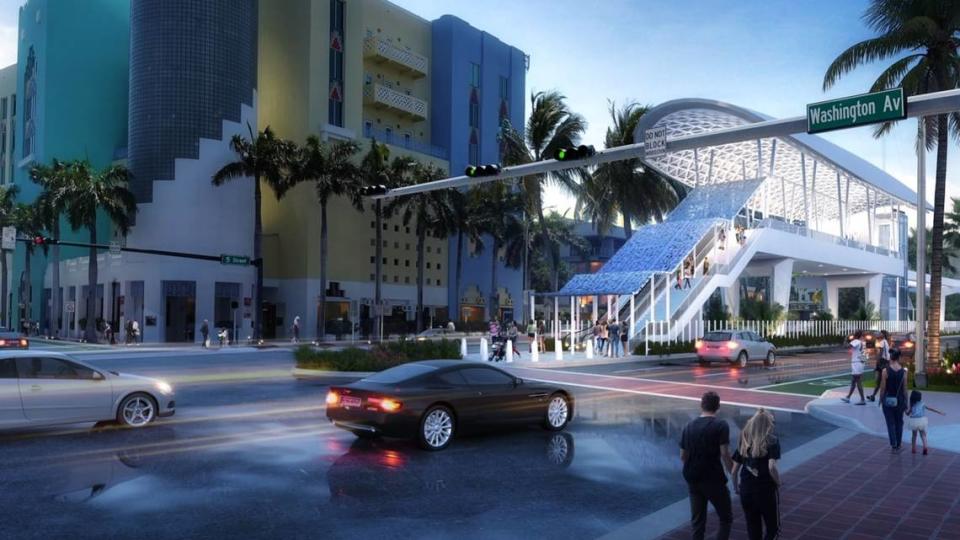Miami Beach has a traffic problem. Are boats and trains options to make it better?
During his State of the City address earlier this year, Miami Beach Mayor Dan Gelber stood in front of a screen that read simply: “Traffic is Bad.”
It was a blunt acknowledgment of one of the most pressing issues facing the 7.5-mile long barrier island, where the vast majority of residents use cars, public transit options are limited, and traffic gridlock often becomes a nightmare at rush hour and during peak tourist periods.
On Monday, officials from the city, county, state and federal governments convened at the Miami Beach Convention Center to talk about the problem and possible solutions, in a meeting Gelber and City Commissioner Steven Meiner, a candidate to succeed the term-limited Gelber as mayor, had long pushed for.
“We know it’s very bad at times, and we’re not looking to tell our residents it’s not our fault,” Gelber said. “I’d like to give our residents some hope and not just say, ‘This is what it is, we live in a barrier island, deal with it.’ ”

The city has poured millions of dollars into trying to alleviate the issue and looked to coordinate with the county, which manages traffic signals and signage, and the state, which controls many of the region’s most highly-trafficked roads.
City officials have invested in technology to monitor traffic so they can alert residents of backups in real time, have begun adjusting traffic signal timing at key intersections to try to synchronize lights and keep cars moving, and will soon be hiring 10 new officers dedicated to directing traffic.
Representatives from the U.S. Coast Guard, which controls drawbridges that can cause traffic jams at 63rd Street and other entry points to the city when boats pass through, attended Monday’s meeting and said they are open to requests to adjust the bridge schedules.
An issue of capacity
But officials said none of those steps address the root of the problem: too many cars on the road.
The Florida Department of Transportation considers several of the city’s main traffic arteries — including the MacArthur Causeway, 41st Street and parts of the Julia Tuttle Causeway — to be at a “failing” level of service, meaning travel demand exceeds roadway capacity.
“The issue is one of capacity,” said Miami Beach Transportation Director Jose Gonzalez. “Signal timing alone provides only marginal improvements and cannot solve capacity issues we have in our city and our region.”

Gonzalez said the city has looked to encourage alternative modes of transportation in recent years by constructing new bike lanes, completing the beachwalk that spans the city’s coast for pedestrians and bikers, and continuing to offer a free trolley service that operates 15 hours per day.
Meanwhile, the state has been working on providing faster bus service across the Julia Tuttle Causeway by having buses use the shoulder as an express lane. The city has committed $5.1 million toward the effort.
The city is also working with a private provider, Poseidon Ferry, to revive a water taxi service between Sunset Harbour and downtown Miami. Gonzalez said it will be a one-year pilot starting later this year, ideally before Miami Art Week in December, with a goal of implementing a permanent water taxi in the future.
The Poseidon Ferry was running in recent years under a previous pilot program but shut down its operations due in part to a lack of ridership.

Gelber said Monday that, despite the city’s efforts, he fears traffic problems could get worse in the coming years.
He pointed to construction projects such as the so-called Signature Bridge on Interstate 395 leading to and from the MacArthur Causeway and South Beach, and plans to replace 11 bridges that make up the Venetian Causeway connecting the six residential Venetian Islands and the cities of Miami and Miami Beach.
“I think that this isn’t going to get better,” he said.
City isn’t embracing Baylink
There was limited discussion Monday of the Baylink, Miami-Dade’s plan to extend the Metromover to Miami Beach and provide a rail connection between Miami and Miami Beach that has been talked about for decades.
County officials have said a train over the MacArthur Causeway would be crucial in transporting workers in the booming South Beach hospitality industry, many of whom can’t afford to live in Miami Beach. The county’s ridership figures show its most popular bus route, the S, runs over the MacArthur with an average of 10,000 boardings each day.
But Miami Beach officials’ response to the latest plans has been tepid. In February, the City Commission scrapped a proposal to support the project, raising concerns that the county would control zoning around the new Metromover stations along Fifth Street.

Some officials have argued a train should instead run farther north along the Julia Tuttle Causeway because it’s closer to major employers in the Mid-Beach area like Mount Sinai Hospital and the Fontainebleau Hotel. U.S. Census Bureau data, however, show the highest concentration of jobs in the city is in South Beach.
The county has set aside funding in its plans for potential transit connections between South Beach and Mid-Beach along Washington Avenue, which could mean the creation of new express bus routes.
At a town hall earlier this year, residents of the upscale South of Fifth neighborhood chanted, “Stop the train!” to express their opposition to the Baylink plan.
Tough transit crowd at this luxury South Beach condo tower where @CommishEileen and transit chief Eulois Cleckley are making the case for Metromover to the Beach. “Stop the train!” “Stop the train!” pic.twitter.com/KwiANuSbLw
— Doug Hanks (@doug_hanks) February 9, 2023
Meiner, the city commissioner running for mayor, told the Miami Herald after Monday’s meeting that he’s concerned increased density around a new Metromover station would result in more traffic, not less.
“I think in certain places that probably makes a lot of sense,” Meiner said. “For us, going down Fifth Street, we already have a significant amount of density. Further increasing it, I don’t think, is what our residents are looking for.”
Transit experts say the idea of locating housing near public transit is to give people the option to live car-free.
Matthew Gultanoff, the director of pedestrian and transit advocacy group Better Streets Miami Beach, said city officials haven’t done enough to provide safe, convenient alternatives to driving.
He said he hopes the Nov. 7 election, in which voters will select a new mayor and three new commissioners, will usher in new leaders who embrace public transit and bike infrastructure projects that often face resistance.
“There’s probably nothing more political in the city than transportation,” he said. “Everything is an uphill battle.”

